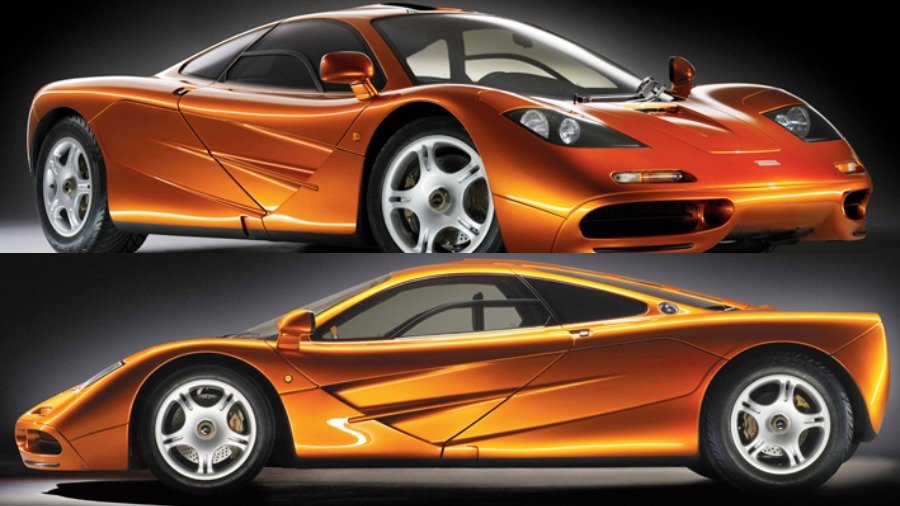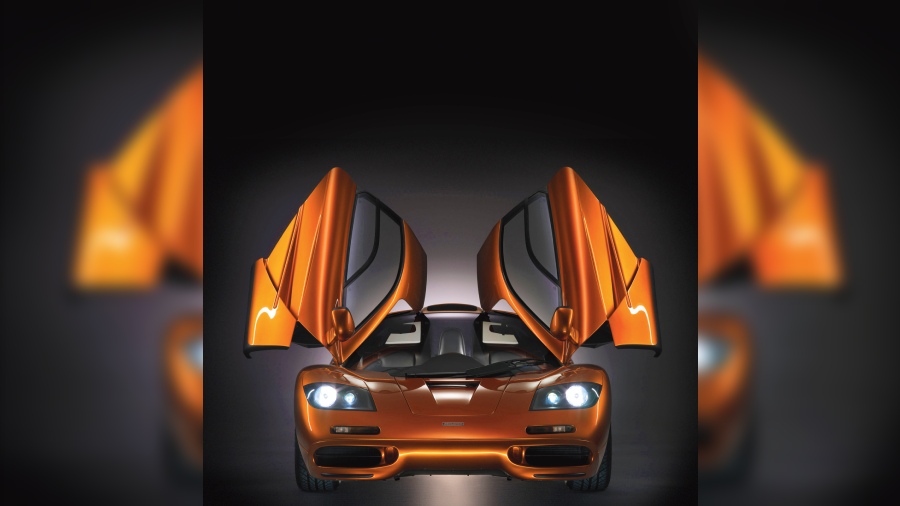It often takes a while for an idea to come to fruition and, when it does, it is sometimes in the unlikeliest of circumstances and places. It was at Milan airport, while McLaren’s honchos were waiting for their flight after the 1988 Italian Grand Prix and talking about the future of the company that they decided to build the F1 and wanted it to be the ultimate sportscar, cost no bar.
McLaren’s chief designer Gordon Murray had been toying with the idea of a three-seat sportscar for many years and, being given the free hand to create the F1 by McLaren boss Ron Dennis, decided to go with the idea. This has remained unique to this day and even Murray’s latest effort, the T.50, doesn’t carry that idea forward even though it does take lots of cues from the F1.

To keep weight down one of the measures was magnesium alloy wheels. Turn indicators on wing mirrors first appeared in the F1. Scissor doors make the entry dramatic.
The F1 was pathbreaking in many ways, both big and small. It adapted a lot of the Formula 1 racing technology for use in a road car. The carbon fibre chassis (monocoque) that is stronger and lighter than steel was one. So was the use of other lightweight materials such as magnesium, kevlar and titanium. Then there was the so-called ‘ground effects’ with the bottom of the car shaped in such a way that the airflow created a low pressure zone that sort of sucked the car to the ground and kept it stable at speed. There were also a couple of fans that sucked the air out from below so that the car would have enough downforce even without the use of wings and spoilers, thus giving it its very smooth and uncluttered profile. There was also clever use of ducts to direct air into various parts to cool hot components.

While saving weight was one half of the story of creating a super performer, adding power was the other. Initially Murray wanted a Honda engine since they were powering McLaren race cars of the time. But that didn’t work out and eventually it was a 6.1-litre, 620hp naturally aspirated BMW V12 that was fitted. Turbocharging or supercharging was shunned since, with the devices available three decades ago, there was a lag in response and that was thought to mess with the directness of response that the makers were seeking since they were aiming to make the best sportscar ever. The big engine meant it got very hot too and to keep the heat away from the cabin the firewalls were lined with the best heat reflector — gold. That’s unique again.

1. The central driving position with passenger seats on either side and slightly to the back is a configuration that is unique to the F1. Not only does it fit in an extra person, it puts the driver in the best possible position as well. 2. There are not that many cars that have a speedometer marked to 240mph and even fewer that can actually attain that velocity. The McLaren F1’s speed record of 240.1mph (386kmph) set in 1998 was the fastest for a production car then and remains so for any car with a naturally aspirated engine even today!
It took about four years to build and test and, finally, on March 28, 1992, the F1 was shown at the the Monte-Carlo Sporting Club in Monaco to critical acclaim. The F1 remained in production up to 1998 with only 106 cars being built over the six-year period. They sold between $800,000 and $1 million. A pristine example was sold in 2019 at close to $20 million and demand has continued to soar.
While not a race car, even as a sportscar with minimal tweaks, the F1 performed very well, winning the 24 hours of Le Mans outright in 1995. In 1998, a car with the rev limiter turned up recorded the fastest time ever for a production car at 240.1mph (about 386kmph), handsomely beating the Jaguar XJ 220’s 212mph and in a single direction hit 243mph.While this record has been surpassed by cars with forced induction — turbochargers and superchargers — no car without them has been able to surpass the F1 till now, in the close to 30 years since the record was created. Testimony to the prowess of what is a rather simple and reliable car that you could drive around town if you wanted to. The McLaren F1 is one of the happiest accidents of motoring that there have been!
Pictures courtesy: McLaren










